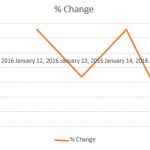Account Payables Management refers to the set of policies, procedures, and practices employed by a company with respect to managing its trade credit purchases.
In summary, they consist of seeking trade credit lines, acquiring favorable terms of purchase, and managing the flow and timing of purchases so as to efficiently control the company’s working capital.
The account payables of a company can be found in the short-term liabilities section of its balance sheet, and they mostly consist of the short-term financings of inventory purchases, accrued expenses, and other critical short-term operations.
WHY COMPANIES FINANCE THEIR PURCHASES
Purchasing inventory, raw materials, and other goods on trade credit allows a company to defer its cash outlays, while accessing resources immediately.
When managed appropriately financing purchases can contribute to effective working capital management.
A company that employs best practices with regards to payables management can reap the benefits of stable operating cycles that provide a stable source of operating cash flows and place it in a good liquidity position with respect to its competitors.
OBTAINING TRADE CREDIT
Companies seeking trade credit must demonstrate that they meet certain criteria with respect to their creditworthiness and financial condition.
This typically entails credit analysis by the supplier.
The financial statements of the company are analyzed, paying particular attention to its working capital, short-term liquidity and short and long-term debt to gauge its ability to meet obligations.
The final product of such analysis is usually some form of a credit risk rating.
PURCHASE AND PAYMENT TERMS
The purchase and credit terms obtained will depend on the company’s risk assessment above.
Companies that are financial stable can benefit from favorable terms (e.g. lengthy repayment periods).
For example, a company might be offered a sales on credit term of 5/10 net 30 implies a 5% discount on the purchase amount if payment is made within 10 days of billing date.
If the discount is not taken, the full invoiced amount is due in 30 day.
MANAGING PAYMENTS
After entering into purchase agreements with a supplier, the company has the responsibility of fulfilling its payment obligations.
The Accounts Payable department is accountable for this function, and performs tasks such as communicating with suppliers, sending payments and reconciling bank records, as well as updating and performing related accounting entries
Managing payables also include the expense administration with respect to the company’s own employees.
Expenses such as employee travelling, meals, entertainment, and other costs related to doing business for the company are administered by the payables department and must be managed appropriately.
EVALUATING THE PERFORMANCE OF PAYABLES MANAGEMENT
Accounts payable are one of 3 main components of working capital, along with receivables and inventory.
Understanding how these 3 accounts interact among each other and the resulting effects on working capital levels, cash flow, and the operating cycle can help in managing and evaluating payables management.
An appropriate balance must be struck, whereby the advantage of deferring cash outlays using trade credit is weighted against the risk of excessive short-term credit.
It is therefore important to maintain optimal utilization of credit lines and timing of payments, and create a balance between the need for cash, working capital, and liquidity.
A number of metrics and short-term financial ratios can be used to evaluate the performance payables management.
Payables Turnover Ratio
Management can use this ratio to measure the average number of times a company pays its suppliers in a particular period.
A higher number than the industry average indicates the company pays its suppliers at a faster rate than its competitors, and is generally conducive to short-term liquidity.
Days in Payables Outstanding (DPO)
Measuring the average length of time it takes a company to pay for its short-term purchases in a period, the DPO can be used by management to determine an optimal timing of payments for its payables.
Cash Conversion Cycle
An important measure of the length of time required to turn inventory purchases into sales, and subsequently into cash receipts.
Using the CCC, management can assess the interaction of payables with the 2 other working capital accounts: receivables and inventory, and the resulting effects on cash flow.
A low CCC is highly desirable. A company can shorten the CCC by for example, lengthening its terms of purchases.
Net Working Capital (NWC)
NWC is the difference between current assets and current liabilities. High levels are desirable for short-term liquidity.
A decreasing pattern or trend in NWC can be attributed to increasing levels of payables, and thus can serve as a warning sign of excessive short-term credit.
A negative NWC (particularly when persistent) is a red flag for a lack of liquidity or potential insolvency.
Current and Quick Ratio
Two other liquidity measures, the current ratio expresses the NWC equation above as a ratio between current assets and current liabilities. Holding all else equal, rising A/P levels will reduce both the current and quick ratio. These ratios can be used to assess the impact of increasing payables on short-term liquidity.
CONCLUSION
The Accounts payable of a company is an important working capital account. Effective payables management can enhance a company’s short-term cash flow position through the design of optimal timing of payments to suppliers.
However, important considerations should be given to excessive financing, as that has a direct impact on the credit risk of the company and its short-term liquidity.

 Using Excel to Track Your Stock Portfolio
Using Excel to Track Your Stock Portfolio InvestOpedia.com
InvestOpedia.com Why Portfolio Diversification Matters More than Most Investors Think?
Why Portfolio Diversification Matters More than Most Investors Think?
